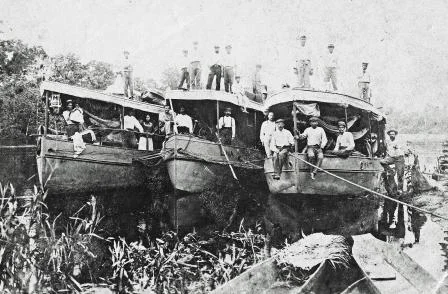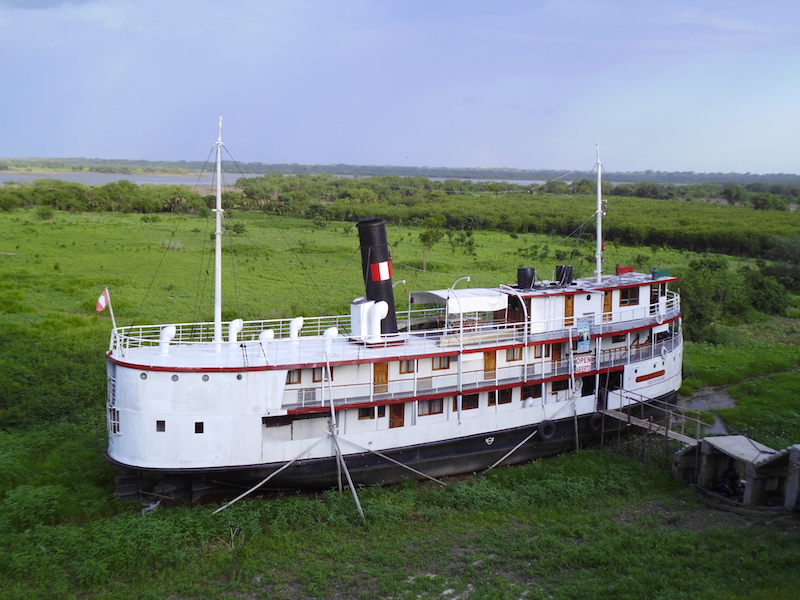The epic tale of the inspiration for the classic Herzog film Fitzcarraldo.
A man who symbolised the excesses of Peru's Rubber Boom.
Movie production a similar tale of ambition and folly.
Carlos Fitzcarrald was born to an Irish-American father and Peruvian mother in 1867, and raised in the city of Iquitos, which became the heart of the Rubber Boom.
Venturing deep into the Amazon in the 1890s, Fitzcarrald discovered a trove of rubber trees in the region of Madre de Dios that now holds Manu National Park. In order to get the rubber out, he paid 200 rubber workers to carve a 13 km (8 mile) path up and over a jungle ridge between two watersheds. Then he pressed a thousand indigenous slaves into carrying a 30-ton steamship, the Contamana, cut into pieces, over the mountain.
But it was all for nothing. In a Peruvian equivalent of Greek tragedy, the famed rubber baron drowned the following year, in 1897, aged just 35, when his reassembled steamship sank in the Amazon.
A still from the film Fitzcarraldo.
However, his memory survives locally in the name of a province in the Ancash region and the Fitzcarrald Isthmus north of Manu; and internationally in the 1982 film Fitzcarraldo by German director Werner Herzog, with Klaus Kinski memorable in the lead role, for both his acting and his tantrums.
Herzog used this epic struggle between Man and Nature as a symbol of the extremes of human endeavour and exploitation provoked by the Rubber Boom.
Werner Herzog on the set of Fitzcarraldo.
In keeping with this theme, the film's production was notoriously grand in scale and wrought with problems.
The shoot involved the hauling of an actual boat weighing 340 tons, up a hill, using local, indigenous people.
The cast and crew, working in extreme jungle conditions, were beset by illness, and a number of people were injured during the making of the movie.
Iquitos still has echoes from both the time of Fitzcarrald and the filming of Fitzcarraldo.
The Historic Boat Museum has restored a small number of vessels from the Rubber Boom period, which can be visited ... and even enjoyed as an Amazon cruise.
The Ayapua, now a living museum in Iquitos.
Casa Morey, a former rubber baron's mansion.
Moreover, there are still a number of buildings in the city dating from the time. Some, such as the Casa Morey, have been lovingly restored to create an atmospheric hotel.
Also, the guesthouse in Iquitos where both Fitzcarraldo and Aguirre: The Wrath of God - another of Herzog's films set in the Peruvian Amazon and starring Klaus Kinski - were conceived, and many of the cast members stayed (including Mick Jagger, until he had to leave to go on a Rolling Stones' tour!) was bought by the executive producer, Walter Saxer.
He continues to run it as a hotel, called appropriately Casa Fitzcarraldo, and has filled it with memorabilia from the movie.
For information on how to enjoy these, please get in touch.






